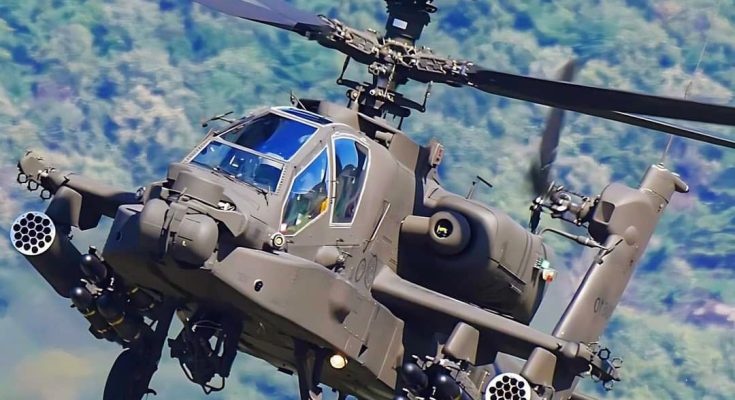The AH-64 Apache helicopter is one of the most formidable and recognizable attack helicopters in the world, often hailed as the backbone of U.S. military air power. Serving primarily in attack and close air support roles, the Apache has played a pivotal role in shaping modern warfare. Its robust design, powerful armament, and cutting-edge technology have made it indispensable in numerous combat operations, from the Gulf War to the conflicts in Iraq and Afghanistan.
Design and Capabilities
Developed by McDonnell Douglas (now Boeing) in the 1970s, the Apache was designed with one primary mission: to destroy enemy armor and support ground troops in combat. The helicopter features a tandem-seat cockpit, with the pilot and gunner working together to operate its weapons systems effectively. The Apache is powered by two turboshaft engines that provide it with exceptional speed, range, and the ability to carry heavy weaponry while maintaining maneuverability.
A key feature of the Apache is its advanced avionics and targeting systems, which enable the aircraft to operate in diverse and hostile environments. The Longbow radar, a key element of the Apache’s sensor suite, allows it to detect and engage targets even in adverse weather conditions or at night. The helicopter is equipped with infrared and electro-optical targeting systems, providing it with the ability to target and track enemy units with precision, day or night.
Weaponry
The Apache’s armament is where its combat capability truly shines. The helicopter is equipped with a 30mm M230 chain gun mounted under the nose, capable of delivering a high rate of fire to engage both infantry and light armored vehicles. In addition, it can carry up to 16 AGM-114 Hellfire missiles, highly accurate, guided munitions designed to destroy enemy tanks, armored vehicles, and fortified positions. The Apache can also carry Hydra 70 rocket pods, expanding its versatility in striking both armored and soft targets.
Its weapon systems allow the Apache to engage targets with extreme precision, often from a standoff distance, reducing the risk to the aircraft while maximizing damage to enemy forces. This ability to provide close air support makes the Apache a crucial asset on the battlefield.
Combat Performance and Operational History
The AH-64 Apache was first deployed in combat during the Gulf War in 1991, where it demonstrated its effectiveness against Iraq’s armored forces. The Apache’s success in this conflict cemented its status as one of the most lethal attack helicopters in the world. In subsequent conflicts, including the wars in Iraq and Afghanistan, the Apache continued to prove its worth. Its ability to provide support to ground troops, conduct reconnaissance, and destroy enemy armor has made it a versatile tool for commanders in the field.
In addition to its combat role, the Apache has also been used in peacekeeping and humanitarian missions, where its surveillance and defensive capabilities are invaluable. The helicopter’s ability to operate in a wide range of environments, from desert to mountainous terrain, makes it a flexible asset for U.S. military operations worldwide.
The Apache’s Evolution
The Apache has undergone continuous upgrades since its introduction. The AH-64D Apache Longbow, introduced in the late 1990s, featured the integration of the Longbow radar system, enabling the helicopter to detect and engage targets at longer ranges and in poor visibility conditions. The most recent variant, the AH-64E Apache Guardian, includes upgrades to its engines, avionics, and communication systems, further enhancing its ability to operate in modern, networked combat environments. Additionally, the Apache Guardian can control unmanned aerial vehicles (UAVs), expanding its operational flexibility.
Conclusion
The AH-64 Apache remains one of the most powerful and versatile helicopters in the world. Its design, weaponry, and advanced technology make it a key component of U.S. military air power. Through numerous upgrades and operational successes, the Apache continues to adapt to the evolving demands of modern warfare. Whether providing close air support, engaging armored units, or conducting reconnaissance, the Apache remains an invaluable asset for the U.S. military, ensuring that it will continue to play a vital role in future combat operations.



